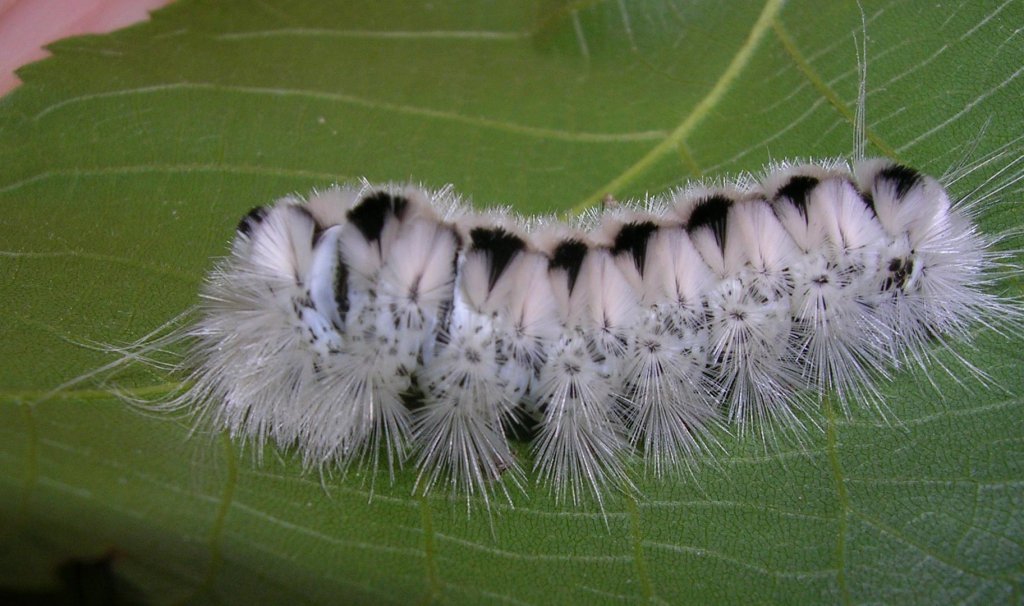White wooly worms, also called woolly bear caterpillars, are fascinating creatures. They are tiny, fuzzy insects that love to munch on plants such as dandelions and clover. You might have encountered these fuzzy insects and wondered if they were harmful.
Understanding caterpillar varieties, including white wooly worms, aren’t worms at all, is crucial. They’re the caterpillar stage of a moth known as the ermine moth. This knowledge is key to identifying the diverse world of caterpillars accurately.
These caterpillars have soft, white hairs covering them, giving them a wooly appearance. These friendly caterpillars play a part in nature’s cycle by becoming beautiful moths as they grow up. Now, when it comes to whether they are toxic to humans or not, we’ll find out more about white woolly worms and what they look like.
Let’s learn more about these fascinating creatures and discover whether they’re poisonous!
How Poisonous are the White Woolly Bear Worms?
White Woolly Bear Worms won’t harm people. Even though they look unique with their fuzzy coating, they don’t have any poison. But, they have tiny hair-like things called setae on their bodies, which can sometimes irritate sensitive skin or cause allergies if touched.
So, it’s better not to touch them with your bare hands. These worms are usually calm and like to roll up into a tight ball when they’re scared, which is their way of protecting themselves.
They’re not trying to attack anyone. While White Woolly Bear Worms aren’t dangerous, it’s important to be careful and not disturb their natural homes when you see them.
You can watch these interesting creatures from a safe distance and learn about insects without worrying about your health.
Other Poisonous Worms
1. Sycamore Tussock Moth Caterpillar
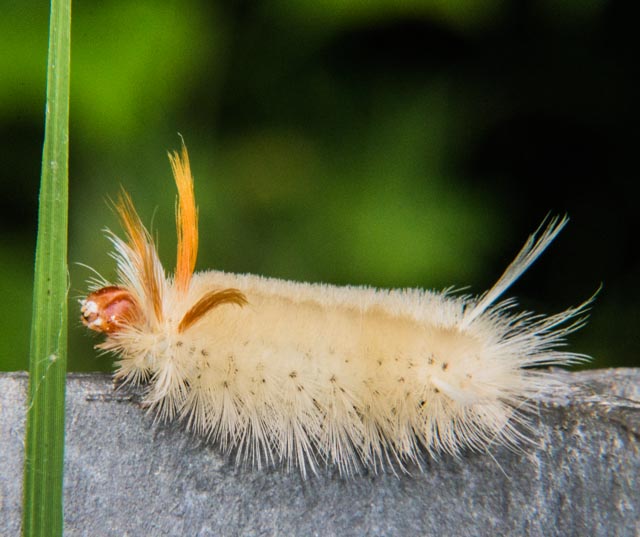
The Sycamore Tussock Moth Caterpillar might seem harmless because it looks fuzzy and white, but it has a secret danger. Its fluffy hairs can make your skin itch and turn red if you touch them. These hairs have annoying chemicals that can cause pain, such as itching and rashes, especially for people with sensitive skin.
But don’t worry too much because this caterpillar’s poison isn’t as strong as some other poisonous bugs, and really bad reactions don’t happen often.
2. Slug Caterpillars
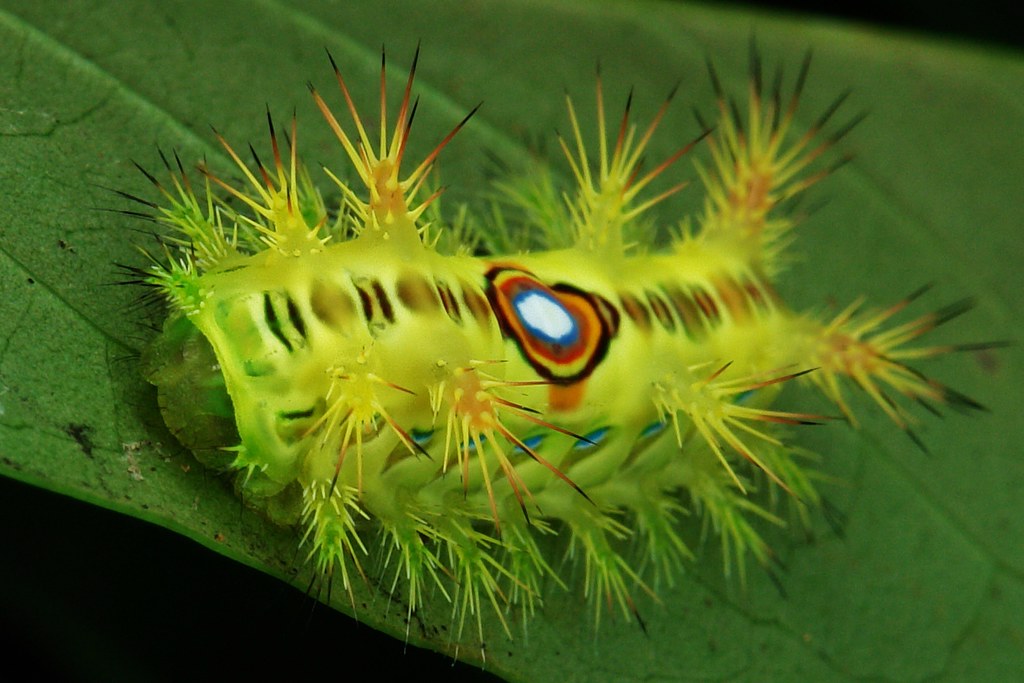
Slug caterpillars, which are also called cup moths or limacodids, can be found in different colors and shapes, with some looking white and fluffy. These caterpillars may look soft, but they actually have small, stinging spines hidden underneath.
If you accidentally touch them, these spines can release venom that can make you feel pain, swelling, and irritation. How bad the reaction is can differ from person to person and also depends on the particular kind of slug caterpillar you come across.
3. Io Moth
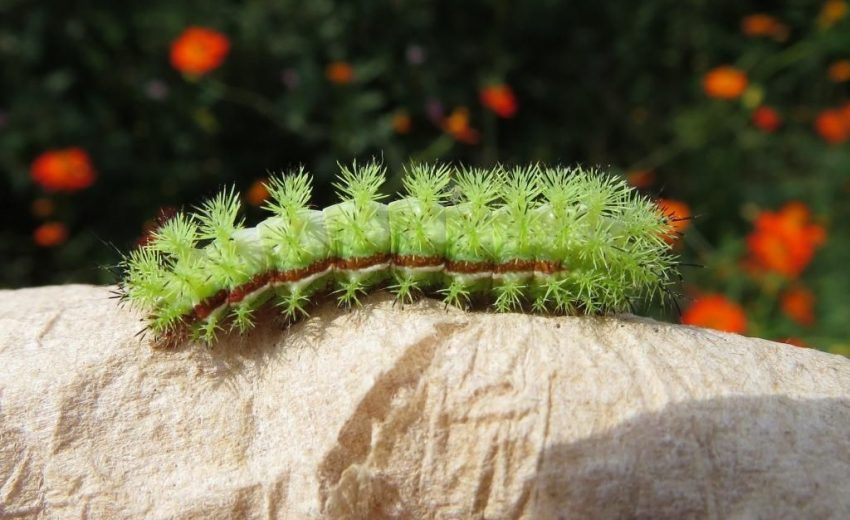
The Io Moth caterpillar looks really cool with its green body and some white fur patches. It’s not super famous for being poisonous like some other caterpillars, but it has spines that can sting you and make it hurt a lot if you touch them.
If you get stung, your skin might feel uncomfortable, turn red, and swell a bit, but it’s usually not very dangerous unless you’re really allergic to it.
4. Puss Caterpillar
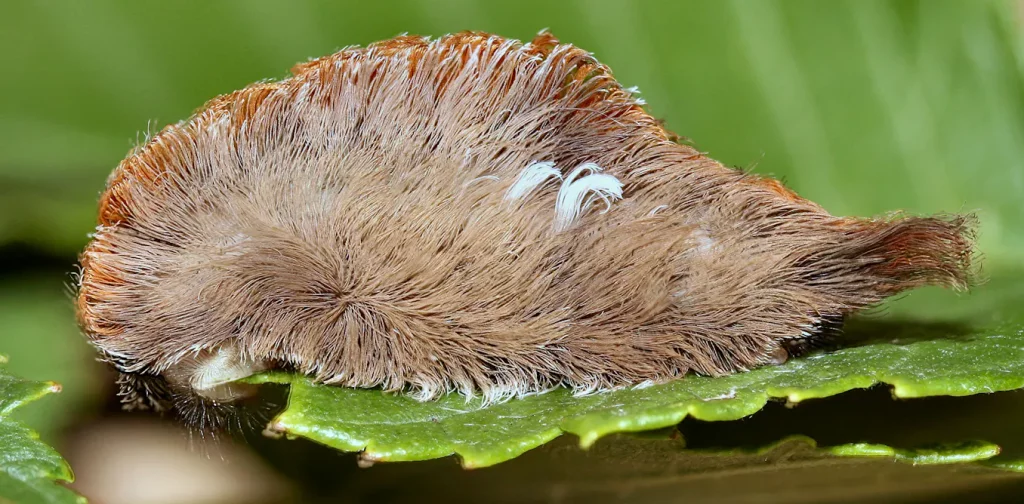
The Puss Caterpillar is known as one of the most poisonous caterpillars in North America. It looks harmless with its fluffy white hair, but don’t be fooled. Underneath that soft exterior, it hides spines filled with venom. If you touch it, these spines can break off and inject toxins into your skin.
This can lead to severe pain, swelling, and sometimes even serious allergic reactions. If you get stung by a Puss Caterpillar, you should seek medical help right away to ease the pain and handle any potential allergies.
Are White Wooly Worms Poisonous to Plants?
White Woolly Worms aren’t plant troublemakers. Actually, they’re pretty helpful because they munch on different types of weeds and wild plants. They mostly feast on things such as grass, clover, dandelions, and other short plants.
While they might take a tiny nibble from your garden plants occasionally, they don’t eat a lot and don’t usually harm them much. So, gardeners don’t have to worry about these worms causing harm to their plants.
Conclusion
White woolly worms are not poisonous to humans. These fuzzy little creatures might look strange, but they won’t harm you if you touch them or even pick them up. Scientists have studied woolly worms, and they have found no evidence that their white hairs contain toxins or poisons. So, you can rest easy knowing that these insects are harmless.
However, it’s important to remember that while white woolly worms are not poisonous, there are other insects and creatures in nature that can be harmful. So, it’s always a good idea to be cautious when handling unfamiliar insects or animals.
So, the next time you come across a white woolly worm, you can admire its fluffy white coat without worrying about any harm coming your way.

